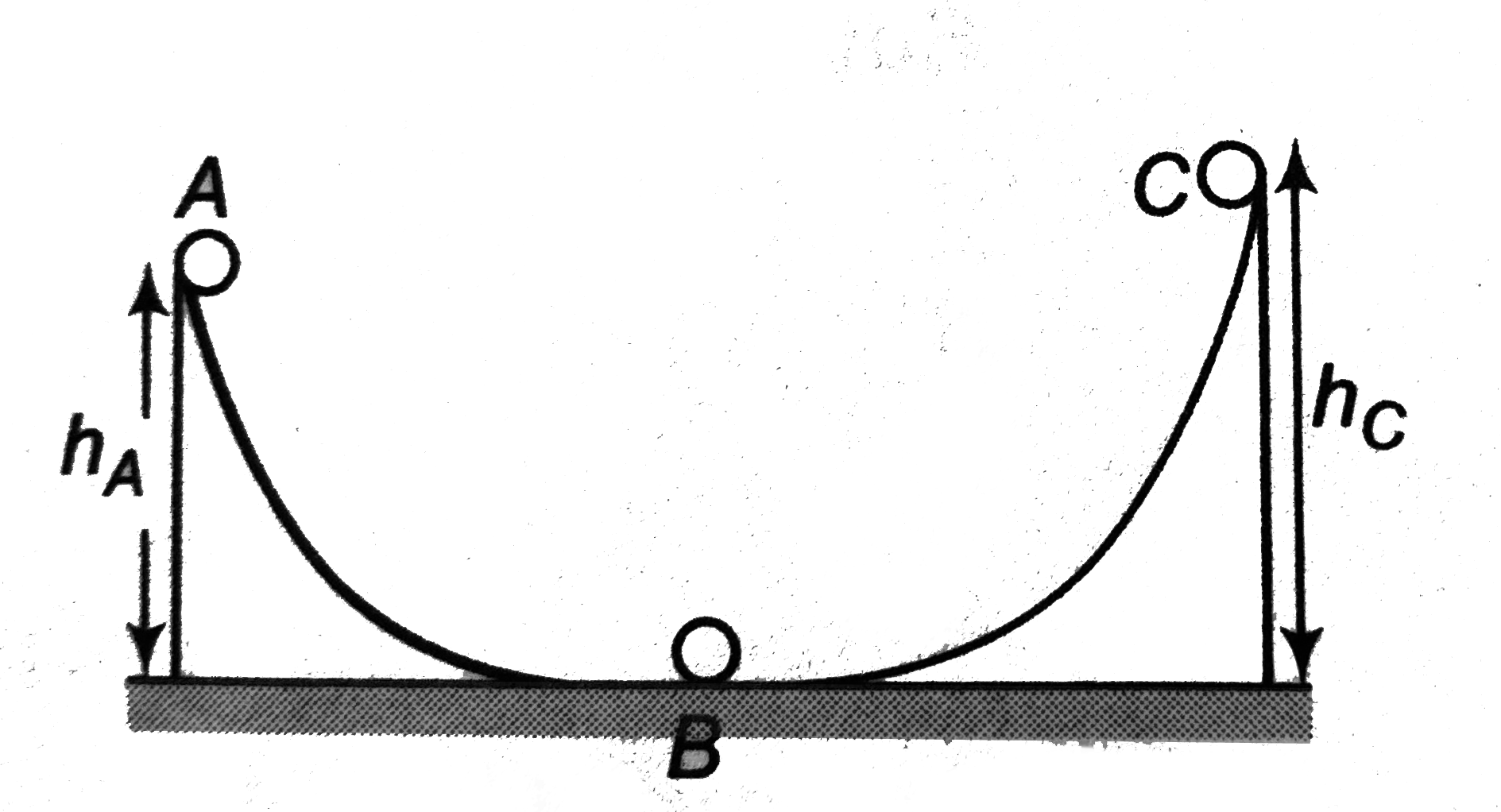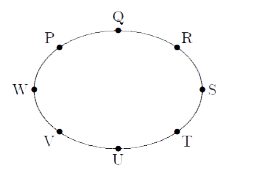
A ball moves over a fixed track as shown in the figure. From A to B the ball rolls without slipping. If surface BC is frictionless and KA,KB and KC are kinetic energies of the ball at A, B and C respectively then
(a). hA>hC,KB>KC
(b). hA>hC,KC>KA
(c). hA=hC,KB=KC
(d). hA<hC,KB>KC
hA>hC,KB>KC
hA<hC,KC>KA
hA=hC,KB=KC
hA<hC,KB>KC
The correct Answer is:A, D
Since no work is being done in done in the proces, the sum of kinetic energy, translational kinetic energy, rotational kinetic energy and potential energy will be constant.
KEA+mghA=KEB=KEC+mghC
KEB>KEA and KEB>KEC
now if hC>hA, then KEA+KEC
Topper's Solved these Questions
- BOOK - CENGAGE PHYSICS ENGLISHCHAPTER - RIGID BODY DYNAMICS 2EXERCISE - AR_TYPE2videos
RIGID BODY DYNAMICS 2
- BOOK - CENGAGE PHYSICS ENGLISHCHAPTER - RIGID BODY DYNAMICS 2EXERCISE - LC_TYPE8videos
RIGID BODY DYNAMICS 2
- BOOK - CENGAGE PHYSICS ENGLISHCHAPTER - RIGID BODY DYNAMICS 2EXERCISE - SCQ_TYPE29videos
RIGID BODY DYNAMICS 2
- BOOK - CENGAGE PHYSICS ENGLISHCHAPTER - RIGID BODY DYNAMICS 1EXERCISE - Integer11videos
RIGID BODY DYNAMICS 1
- BOOK - CENGAGE PHYSICS ENGLISHCHAPTER - SOUND WAVES AND DOPPLER EFFECTEXERCISE - Integer16videos
SOUND WAVES AND DOPPLER EFFECT
Similar Questions
A small bell starts moving from A over a fixed track as shown in the figure . Surface AB is friction from A to B the bell roll ralis without sipping BC is friction , KAKB andKC are kinetic energy of the bell at A,B and C respacecvely.Then
 View Solution
View SolutionFor the reaction, N2+3H2⇔2NH3, the units of KcandKp respectively are:
View SolutionA planet travels in an elliptical orbit about a star as shown. At what pair of points is the speed of the planet the same?
 View Solution
View SolutionIdentify the substances (A) through (D) in a sequence.

Comment on Ka values of (B) and (C ).View SolutionIf Ka1>Ka2 of H2SO4 are 10−2 and 10−6 respectively then:
View SolutionThe relation between KPandKC for the reaction A(g)+B(g)⇔C(g)+2D(g) is -
View SolutionFor the reaction : 2A+B⇔3C at 298K,Kc=49
A 3L vessel contains 2,1 and 3 molesof A,B and C respectively.
The reaction at the same temperatureView SolutionIn a reversible reaction Kc>KpandΔH=+40kCal. The product will be obtained in less amount at :-
View SolutionGiven
i)A↔B+CKeq(1)<br>ii)B+C↔PKeq(2)
then Keq for reaction A↔pisView SolutionLet three positive numbers a, b c are in geometric progression, such that a, b+8, c are in arithmetic progression and a,b+8,c+64 are in geometric progression. If the arithmetic mean of a, b, c is k, then 313k is equal to
View Solution
